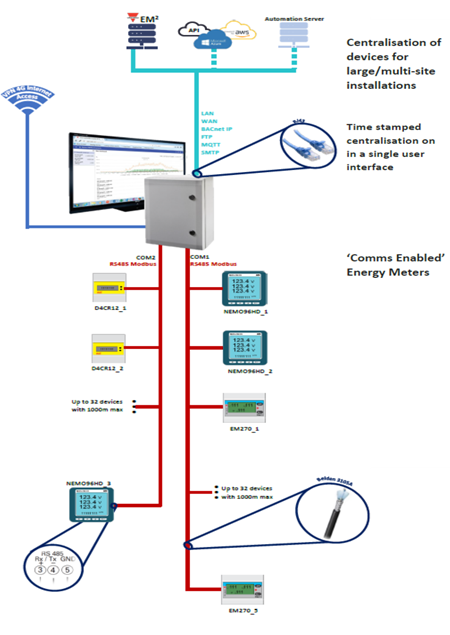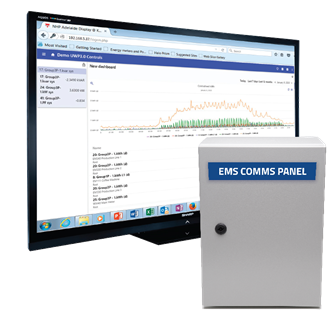 The National Construction Code (NCC) is created and maintained by the Australian Building Codes Board (ABCB). It is the minimum performance-based requirements for a new and refurbished building’s safety, accessibility, health, amenity, and sustainability. Section J of the document covers the sustainability and energy efficiency aspects of the building with Part J8 covering the energy monitoring requirements. In May 2020, the changes released in the NCC 2019 BCA came into effect.
The National Construction Code (NCC) is created and maintained by the Australian Building Codes Board (ABCB). It is the minimum performance-based requirements for a new and refurbished building’s safety, accessibility, health, amenity, and sustainability. Section J of the document covers the sustainability and energy efficiency aspects of the building with Part J8 covering the energy monitoring requirements. In May 2020, the changes released in the NCC 2019 BCA came into effect.
What has changed?
The main change relevant to energy monitoring is the addition of Part J8.3c, which brings in the need for energy meters to be centralised by a single user interface where the energy data can be stored and easily accessed for analysing and reviewing.
What do the changes mean for you?
- Energy meters must be ‘Comms Enabled’ (MODBUS RS485 or TCP/IP, BACnet IP are common protocols used).
- All energy meters installed on site must be connected to a single user interface for data collection.
- The energy data collected must be time stamped. (i.e. usage to be recorded with reference to time and date).
- Ideally the information should be easily identifiable (i.e. labelled according to the circuit it is monitoring, lighting, HVAC, power).
- The single user interface must be able to store the data for a reasonable period of time (data storage capacity not specified).
Why is this important?
When applying for different certifications such as construction and occupancy certificates, a compliance to NCC requirements needs to be shown. There are a few options that can be used to show compliance including NABERS or Green Star ratings. Going through the NABERS and Green Star rating methods can be an advantage because companies and organizations can gain a competitive advantage in the marketplace by proving themselves as ‘good corporate citizens.’ This can help enhance their brand and support their marketing strategy. These methods, along with the energy monitoring requirements, play into the overall aim of the NCC 2019 BCA amendments, which is to reduce the overall GHG emission of Australia and energy costs to the business while promoting innovative economical solutions for sustainability.
NABERS Rating
NABERS (The National Australian Built Environment Rating System) is a national rating system that measures the energy efficiency, sustainability and indoor environment quality of an office building or tenancy. To meet the requirements for the NCC, an office building must enter into a commitment agreement to meet a minimum base building star rating of 5.5 stars. This commitment is made at the design stage and is reviewed 12 months after the building is completed.
Green Star Rating
Green Star is created by the Green Building Council of Australia (GBCA), which assesses the environmental design and construction of buildings. A Green Star rating can be used for all commercial and industrial buildings. To meet the requirements for the NCC, a ‘Design & As Built’ certificate needs to be obtained by showing that the new building will be 10% more energy efficient than an already existing energy efficient reference building.
 How you can you comply to section J8?
How you can you comply to section J8?
NHP now provides the SMART eBox, an all-in-one enclosed EMS solution providing hassle-free compliance to the NCC 2019 J8.3. With the SMART eBox, you can connect up to 64 NHP energy meters, SMART Panelboards and SMART Distribution devices for energy and temperature monitoring and control. Installation is as simple as installing a panelboard, hang it on the wall and connect power and comms – NHP will look after the rest!
To comply with the new Section J8.3c requirements, a building must first meet the requirements in section 8.3b. This table breaks down each section with the suggestion of best suited NHP products.
| NCC 2019 Section J8.3 Requirements | Energy meters | SMART eBOX |
| Part J8.3b | ||
| Install ‘comms enabled’ meters to monitor individual loads (ie lighting, power, HVAC, central hot water and other) | All NHP meters or NHP SMART Panelboard with branch feeder sub circuit monitoring. | |
| Part J8.3c | ||
| All the meters must be linked to one central system | Centralises up to 64 meters | |
| All the meter data must be viewable in a central system | Through any web browser | |
| All the data must be stored in the one system |
Data stored on eBox’s inbuilt webserver or can be emailed to a different location for storage | |
| Time stamped data |
Via SMART eBox |
Many options for data time stamped intervals, with hourly intervals being the most commonly used. |
For more information on NHP Energy Management Solutions, please call your local NHP representative or email us:
Australia - 1300 NHP NHP nhpsales@nhp.com.au